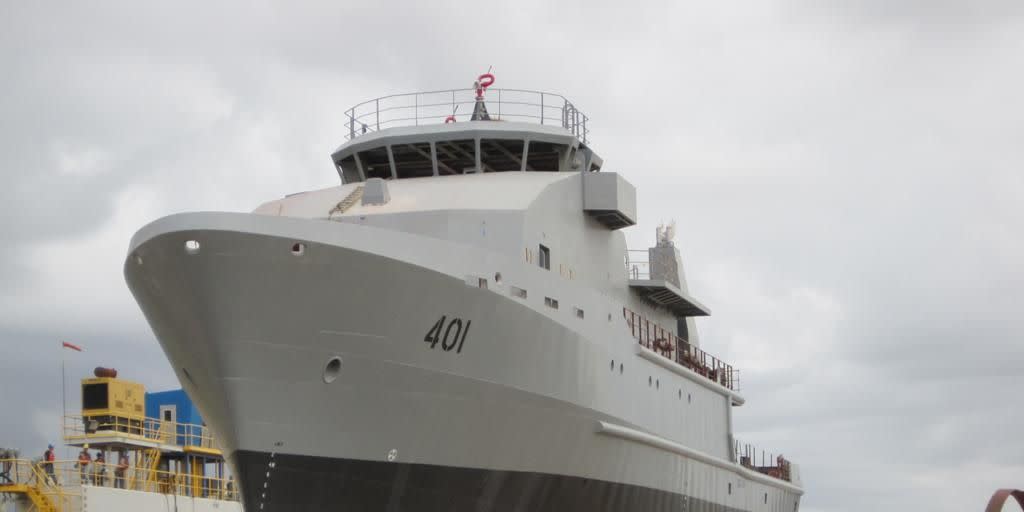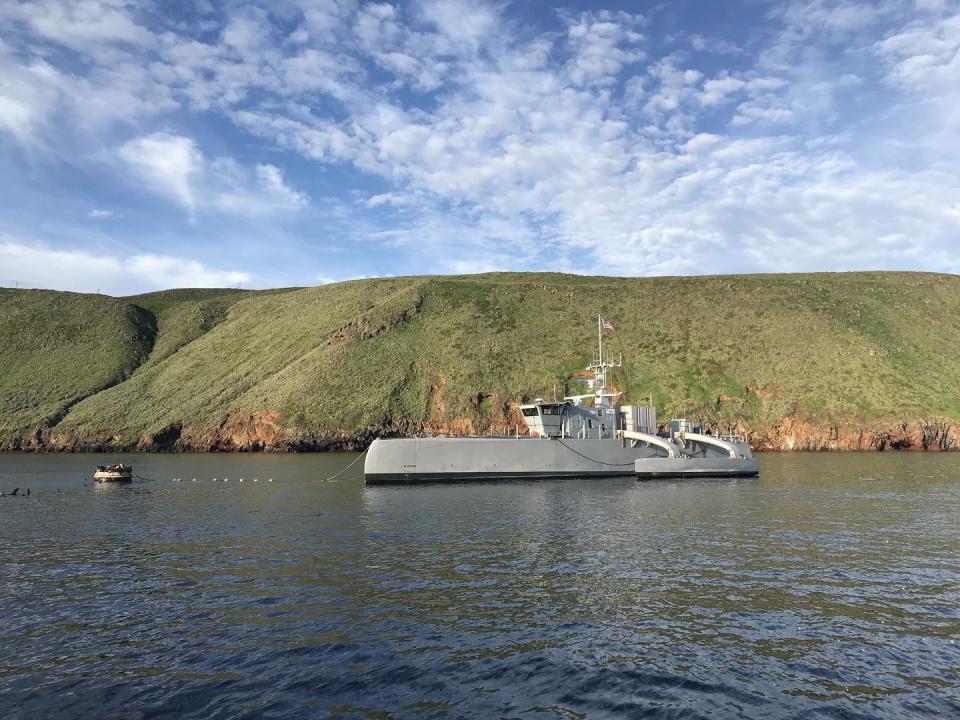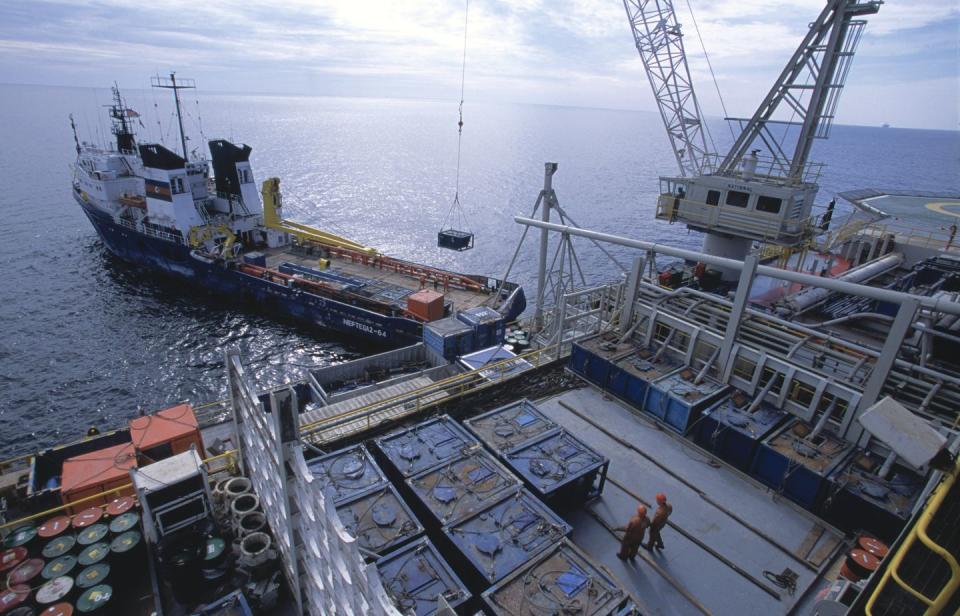The U.S. Navy Wants To Build the World's Largest Robot Warship

The U.S. Navy is calling on industry to present ideas for its Large Unmanned Surface Vehicle (LUSV) ship. The Navy wants ten LUSV ships in five years. The ships would function as scouts for the main battle fleet, carrying sophisticated radar and sonars or floating magazines packing extra anti-air and cruise missiles.
Above all, the ships will do what proponents call the “3D work”: dull, dirty, and dangerous work.

The Draft Request for Proposal, posted on the FedBizOpps web site, states, “The LUSV will be a high-endurance, reconfigurable ship able to accommodate various payloads for unmanned missions to augment the Navy’s manned surface force. With a large payload capacity, the LUSV will be designed to conduct a variety of warfare operations independently or in conjunction with manned surface combatants. The LUSV will be capable of semi-autonomous or fully autonomous operation, with operators in-the-loop (controlling remotely) or on-the-loop (enabled through autonomy).
As part of its coverage U.S. Naval Institute News laid out some details on the LUSV. “As part of the fiscal year 2020 budget, the Navy asked for $400 million to build two LUSVs that are about 200 to 300 feet in length with a displacement of about 2,000 tons as a research and development program, officials told USNI News earlier this year.” The Navy plans to build two ships a year over a five year period.
LUSV will be the largest unmanned ship to date, essentially a light frigate at a time when the Navy has no such ships in the same size class. The ships will also have limited accommodations for a small number of human crew, if necessary.
The large unmanned ship will be generally unarmed, but with the ability to accept modular payloads of anti-ship missiles and land attack cruise missiles. In that sense they will be an extension of the Navy’s fleet of destroyers and cruisers, acting as floating magazines to bolster the fleet with more weapons. LUSVs will also be capable of acting as floating scouts, sailing over the horizon ahead of manned ships to detect threats early.

The Pentagon’s Strategic Capabilities Office originally spearheaded LUSV under a program called Overlord. Overlord sought to convert a commercial fast supply vessel—ships typically used to service and resupply oil and gas platforms at sea—into an experimental unmanned ship capable of cruising for thousands of miles and weeks without human contact.
Compact and powerful, such vessels also have large decks where all sorts of weapon or sensor payloads could be positioned. Another possibility is a variant of the Offshore Support Vessel developed for the Iraqi Navy (above).
You Might Also Like

